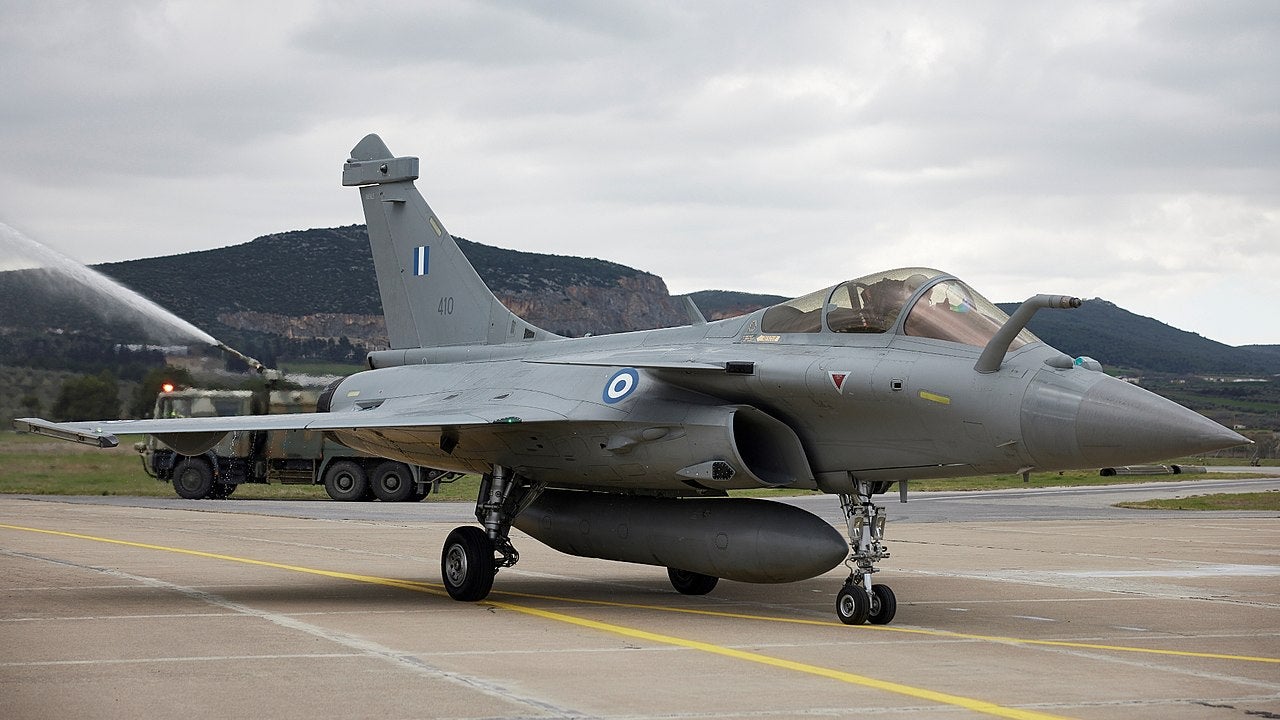SOURCE: IDRW.ORG


In a move that signals deepening defense ties between Athens and New Delhi, Greece has expressed keen interest in exploring the integration of Indian technological components into its fleet of Rafale fighter jets. This potential collaboration could encompass advanced avionics, software, structural parts, and even weapon systems like the Astra missile and Smart Anti-Airfield Weapon (SAAW)—technologies already enhancing the Indian Air Force’s (IAF) Rafale fleet. With all 24 Rafale jets ordered by Greece now delivered—18 in 2021 and the remaining six in 2024—this development highlights a strategic pivot toward cost-effective, innovative solutions amid Greece’s efforts to modernize its air force.
Greece’s acquisition of the Dassault Rafale, a twin-engine, multi-role fighter renowned for its versatility, began with an inter-governmental agreement in January 2021. The Hellenic Air Force received 18 aircraft—six new Rafale C variants in the F3-R standard and 12 used F1 and F2 models from the French Air and Space Force—followed by six additional new jets delivered in 2024. This fleet strengthens Greece’s deterrence capabilities in the Eastern Mediterranean, a region marked by tensions with Turkey. However, the reliance on French-supplied weaponry, such as the high-cost Meteor Beyond Visual Range Air-to-Air Missile (BVRAAM) and the aging MICA BVRAAM with its limited range, has prompted Greece to seek alternatives that balance performance with affordability.
Reports from idrw.org suggest that Greece is looking to India—a nation rapidly advancing its indigenous defense technologies—as a partner to reduce dependency on expensive European systems. The integration of Indian components could not only enhance the operational flexibility of Greece’s Rafales but also foster a mutually beneficial technological exchange.
India’s growing expertise in aerospace offers a compelling suite of solutions for Greece. The IAF’s 36 Rafale jets, inducted between 2020 and 2022, are undergoing integration with indigenous systems, providing a blueprint for potential collaboration. Key Indian technologies under consideration include:
- Astra Missile: The Astra Mk-1, a Beyond Visual Range Air-to-Air Missile (BVRAAM) developed by India’s Defence Research and Development Organisation (DRDO), boasts a range of over 100 km and is designed for high maneuverability. Already integrated with the IAF’s Su-30MKI and slated for its Rafale and Tejas fleets, the Astra offers a cost-effective alternative to the Meteor, which exceeds 200 km in range but comes with a steep price tag of over ?25 crore per unit. Greece, according to idrw.org, sees the Astra as a way to diversify its arsenal and cut costs without sacrificing capability. Future variants like the Astra Mk-2 (160+ km) and Mk-3 (with ramjet propulsion) could further sweeten the deal.
- Smart Anti-Airfield Weapon (SAAW): This DRDO-developed precision-guided munition, with a range of 100 km, is tailored for neutralizing runways, bunkers, and other high-value targets. Its integration into IAF Rafales demonstrates India’s ability to adapt indigenous weapons to foreign platforms, a capability Greece could leverage to enhance its ground-attack options.
- Avionics and Software: India’s advancements in avionics, including the Uttam AESA radar and mission computer upgrades, could offer Greece modernized systems to replace or supplement the Rafale’s Gallium Arsenide (GaS)-based RBE2 radar. Software enhancements, critical for weapon integration and operational autonomy, align with India’s push for self-reliance and could reduce Greece’s reliance on French approvals for upgrades.
- Structural Parts: Indian firms like Hindustan Aeronautics Limited (HAL) and private players such as Tata Advanced Systems have honed expertise in manufacturing aerospace components. These could provide Greece with cost-competitive structural enhancements or spares, bolstering fleet sustainability.
Greece’s interest in Indian technology stems from both economic and strategic imperatives. The Meteor missile, while unmatched in its “no-escape zone” and range, strains budgets—a concern for a nation managing economic recovery alongside defense modernization. The MICA BVRAAM, with a range of 60-80 km, is increasingly outdated against modern threats, necessitating a middle ground. The Astra, priced at ?7-8 crore per unit, offers comparable performance to the MICA and rivals like China’s PL-15E (145 km), making it an attractive option.
Beyond cost, collaboration with India could enhance Greece’s strategic autonomy. By diversifying its supply chain away from exclusive reliance on France, Greece mitigates risks tied to geopolitical shifts or supply disruptions. India’s experience integrating indigenous systems with the Rafale—despite initial French oversight—demonstrates a pathway Greece could follow, potentially negotiating with Dassault Aviation for greater flexibility in future upgrades.
This interest builds on earlier sentiments reported by idrw.org in June 2024, when Greece proposed joint Rafale negotiations with India to boost bargaining power with France. While that focused on procurement synergy, the current push targets technological collaboration—a deeper, longer-term commitment. India, eyeing export markets for its defense products, stands to gain as well. Successful integration of the Astra or SAAW into Greece’s Rafales could open doors to other Rafale operators like Egypt, Qatar, and Indonesia, amplifying India’s global aerospace footprint under the “Make in India” initiative.
NOTE : Article cannot be reproduced without written permission of idrw.org in any form even for YouTube Videos to avoid Copy right strikes. Websites doing illegal reproductions will get DMCA and Legal Notices.